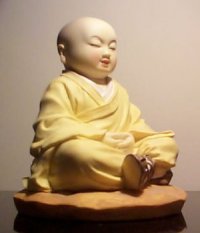| Contents
53. Development of Sects in Chinese Buddhism
After the advent into the world, Shakyamuni Buddha preached in over 300 assemblies in 49 years after his enlightenment under the Bodhi tree at the age of 35. His sermons were later collected into the Tripitaka in Twelve Divisions subsequent to several councils in Buddhist history. His teaching is broad and precise covering all worldly matters and phenomena in the world, as well as in transcendental super-mundane worlds. No matter it is a mote of dust, or it is the entire universe, it is perfectly and completely explained in his teachings. When Buddhism is transmitted to China, it is divided into many different sects. In Chinese, they call sect as ‘tsung’ ( 宗 ). It should be noted that ‘tsung’ bears a wider meaning than ‘sect’ or ‘school’ as translated. ‘Tsung’ consists of people in hierarchy who succeed their Dharma-descent to the common ‘tsu’, ( 祖) i.e. patriarch.
53.2 Reasons for the division of sects The reasons for the division of sects are as follows:
Having different sects does not mean splitting in Buddhism, as all Buddhist Dharma is based on the Tripitaka. Buddhahood is the ultimate goal to be achieved, no matter which way we choose to take. Sects are like departments in a company, which have to co-operate to achieve the common business objective. One sect should not look down upon the other, or exaggerate one’s own superiority over the other. |




